Perfectly Preserved Byzantine Business and Gastronomy District Discovered in Turkey
Archaeologists have uncovered a “sensational” find in Ephesus (also spelled Ephesos), an ancient Greek city which was destroyed suddenly in 614-15 AD, located in modern-day Turkey’s Izmir province. An incredibly well-preserved Byzantine business and dining space has been discovered, perhaps the most significant find to date from this site since finding the renowned terrace houses, according to the head of the excavation, Sabine Ladstätter.
Fantastic Preservation and Sudden Abandonment
This excellently-preserved Byzantine business and gastronomy district on Domitian’s Square was being worked on by archaeologists from the Austrian Academy of Sciences (AAS). The household items were preserved in the rooms due to a thick burnt layer and “thus preserved for posterity”, according to a press release by the AAS. They’ve gone so far as to compare the site to the legendary volcanic ash preservation of Pompeii.
- The Grand and Sacred Temple of Artemis, a Wonder of the Ancient World
- The Celsus Library: 20,000 Scrolls Lost to History but Its Striking Architecture Remains
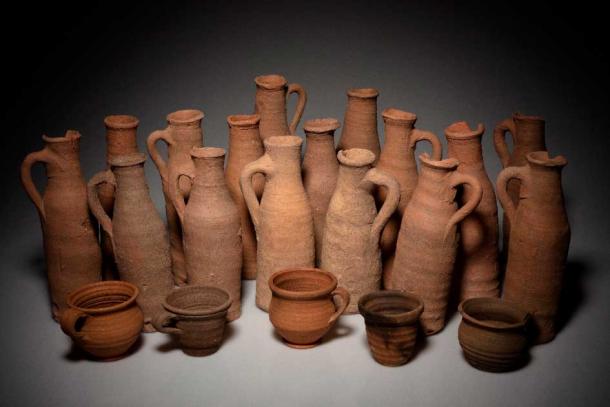
The latest discovery in ancient Ephesus includes a remarkably well-preserved business district, with storage rooms full of amphorae, cups, and utensils, as well as food remains. Source: OeAW-OeAI/Niki Gail
Domitian Square is a prominent location adjacent to the Roman city’s political center, the upper agora. The excavations, which commenced in 2022, are part of a larger research project that analyzes the changes experienced by the city center between the Roman Imperial Period and Late Antiquity, during the collapse of the empire which had begun around the middle of the 5th century AD.
“That the originally large Roman square complex was built over by shops and workshops in Late Antiquity was to be expected. What was completely unexpected, however, was the state of preservation as well as the exact time of destruction and the implications for urban history that can be derived from it”, said Sabine Ladstätter. Ladstätter is the director of the Austrian Archaeological Institute of the Academy and has been in charge of the excavations in Ephesus since 2009.
An area of approximately 170 square meters (1,829.8 square feet) was uncovered. These shops and workshops were constructed over a large Roman square complex, and the premises were all encompassed within.
- A Millennium of Glory: The Rise and Fall of the Byzantine Empire
- The Byzantine–Sasanian War of 602–628 AD and the Rise of the Muslims
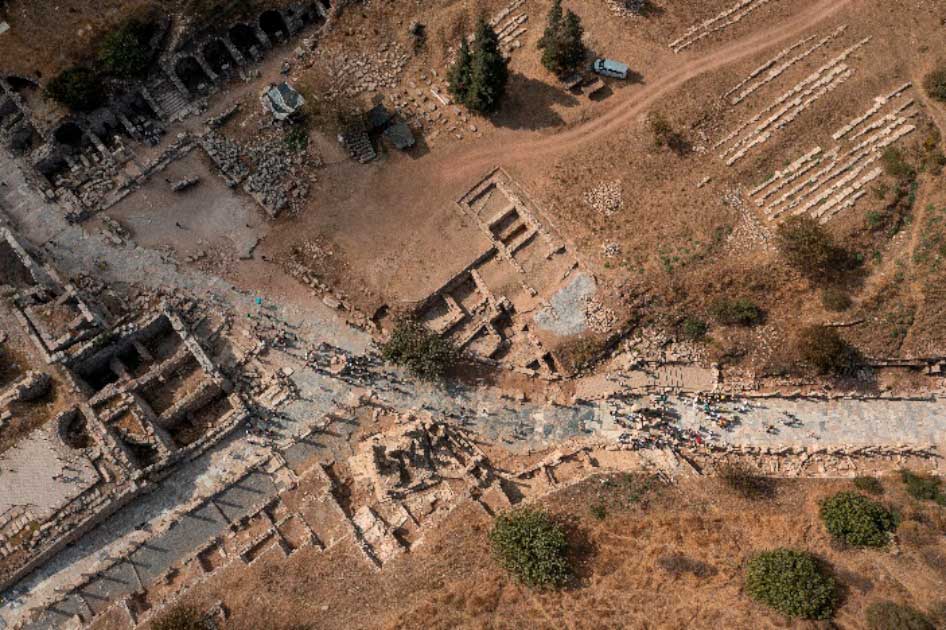
Wide view of the excavation area at Domitian's Square, on the left the adjacent upper agora, on the right Curetes Street (OeAW-OeAI/Niki Gail)
There were individual rooms preserved, up to 3.4 meters (11.1 feet) high, with thousands of pieces of ceramics, and whole bowls with remains of seafood! This included cockles, oysters, and amphorae filled with salted mackerels. Stones from peaches, almonds, olives, charred peas, and legumes were also among the finds, in addition to four gold solidi coins, and 700 copper coins.
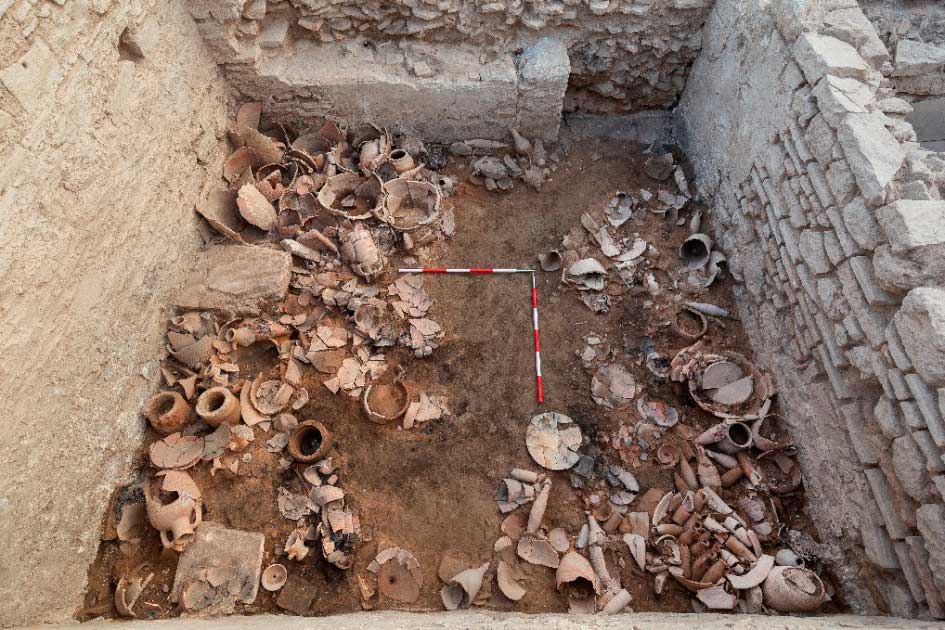
This storage room was excavated in Ephesus, full of vessels with their original contents. In addition, over 400 copper coins were found in this room. (OeAW-OeAI/Niki Gail)
Archaeologists speculate that the excavated rooms include a cookshop, a storeroom, a workshop, and a taberna, or restaurant and bar, along with a shop for lamps and pilgrim souvenirs. This was deduced by looking at 600 small pilgrim bottles sold to Christian pilgrims.
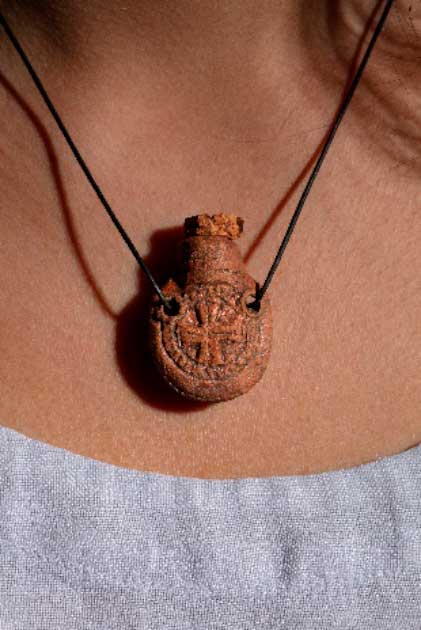
The Christian pilgrim ampoules were only a few centimeters in size and could be worn around the neck. They contained sacred substances, such as holy dust, which could thus be taken away from Christian pilgrimage sites. (OeAW-OeAI/Niki Gail)
Finally, several spearheads and arrowheads found at the site suggest links to the Byzantine-Sasanian War of 602-628, fought between the Byzantines and the Sasanians of Iran, leaving both empires licking severe wounds. There was no other sign of a natural disaster, like an earthquake, that would have caused this sudden abandonment.
A Profile of Ephesus: Ionian League and Temple of Artemis
The settlement at Apasa, the capital of the Arzawans, was destroyed by Attic and Ionian Greek colonists, who built Ephesus on its ruins in the 10th century BC. Ephesus would go onto flourish in the classical Greek era, becoming one of twelve cities that were members of the Ionian League.
During this time, Ephesus emerged as a major urban center with monumental buildings that are famous sites today, including the Library of Celsus, and a massive theater that could hold 24,000 spectators, Heritage Daily reported. The city was famous as a pilgrimage center for those visiting the Temple of Artemis nearby – today one of the Seven Wonders of the Ancient World.
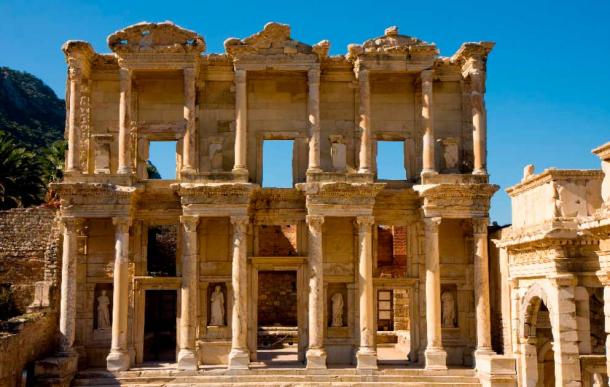
The ruins of the Library of Celsus at Ephesus remain a popular tourist attraction (Garrett Ziegler / CC BY NC ND 4.0)
There were other reasons for Ephesus’ fame – it was one of the recipient cities of one of the Pauline epistles, and the site of several 5th century councils. It was destroyed by the Goths in 263 BC, after an era of prosperity under Roman rule. According to the Greek philosopher and historian, Strabo, it was second in importance and size only to Rome.
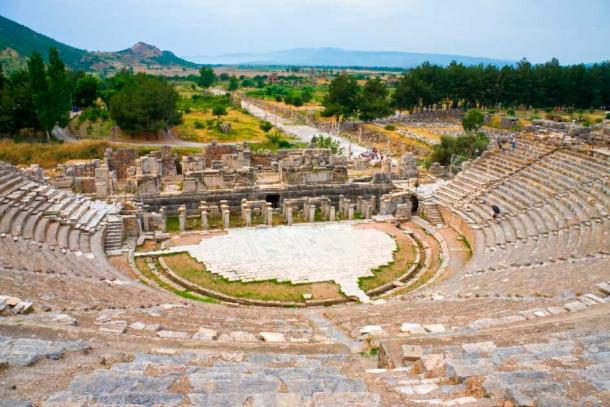
The astonishing remains of the massive theater at Ephesus contributed to its fame (Alexander Khripunov / Adobe Stock)
Although it was rebuilt, Ephesus declined in importance as the harbor along the Küçük Menderes River silted up. During the wars of the 7th century BC, Ephesus met its ultimate demise in the wars with the Sassanids. Later, the Ottomans would incorporate the Ephesians as vassals into their empire in 1390, but the city was abandoned again by the 15th century.
Top image: Numerous oil lamps were unearthed in one of the shop rooms of ancient Ephesus. (OeAW-OeAI/Niki Gail)
By Sahir Pandey
References
Buyukyildirim, O. October 29, 2022. Sensational find in Ephesus: more than 1,400-year-old district discovered. Available at: https://arkeonews.net/sensational-find-in-ephesus-more-than-1400-year-old-district-discovered/.
Researchers Uncover an Early Byzantine Business and Gastronomy District at Ancient Ephesos. October 28, 2022. Heritage Daily. Available at: https://www.heritagedaily.com/2022/10/researchers-uncover-an-early-byzantine-business-and-gastronomy-district-at-ancient-ephesos/145088.
Ephesos: More than 1,400 Year Old Area of the City Discovered under a Burnt Layer. October 28, 2022. OEAW Austrian Academy of Sciences. Available at: https://www.oeaw.ac.at/en/news/ephesos-more-than-1400-year-old-area-of-the-city-discovered-under-a-burnt-layer-2.
Wayne. October 28, 2022. Ephesus: More than 1,400-year-old District Discovered. Today Times Live Available at: https://todaytimeslive.com/world/149707.html.


















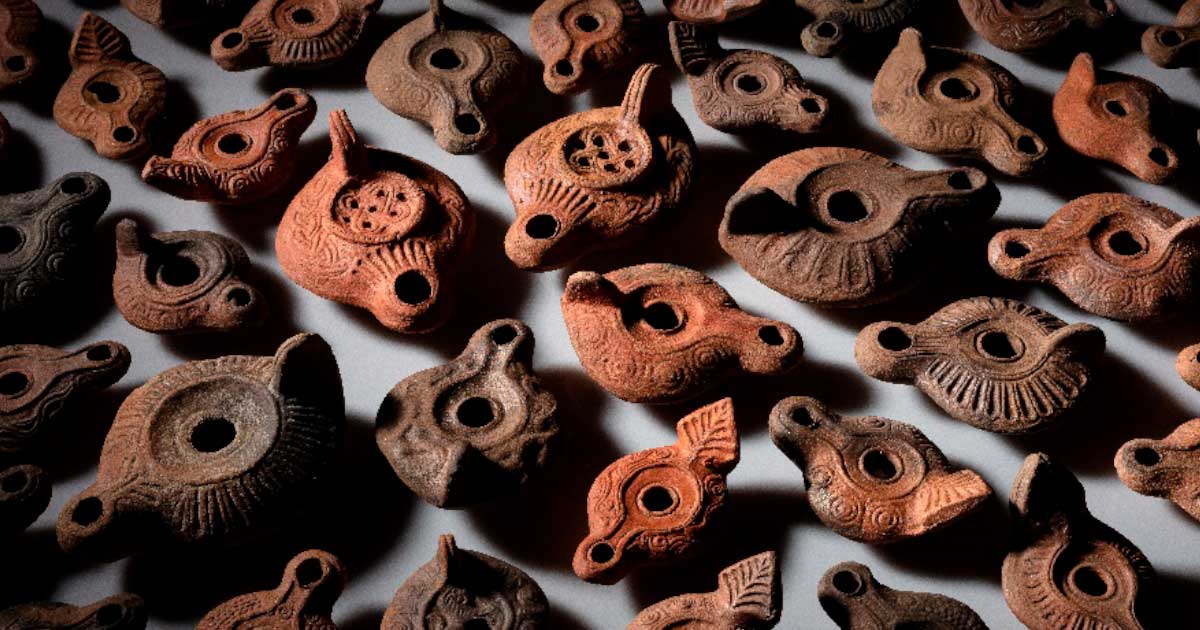

Comments
History states that Ephesus during the 6th-7th century AD faced a massive earthquake, while not ignoring the invading armies of the Arabs (https://www.history.com/topics/ancient-greece/ephesus).
With the movement of the city toward the north, this central area seemed to remain under ruins.
Oh please with the "...ancient Greek city which was destroyed suddenly in 614-15 AD" non-sense. Sure, they find later artifacts in the upper layers of sediment. But no, this place was almost certainly destroyed, and suddenly as they say, much earlier, likely in the same event that destroyed Atlantis (Richat Structure) and all of North Africa and the Levant, circa 115 BC (adding back the zero they removed from Plato's timeline.) Of course, later people moved in and resettled the ruins.
Nobody gets paid to tell the truth.
Can you sort out your ADs and BCs? Several of which are quite wrong